| Lunenburg is famous for fishing and shipbuilding. It
has one of the finest maritime museums on the east coast. There are a number
of cold water aquaria with the fish which are common to the seas around
here. This is an Atlantic salmon which can grow to be five feet long. | 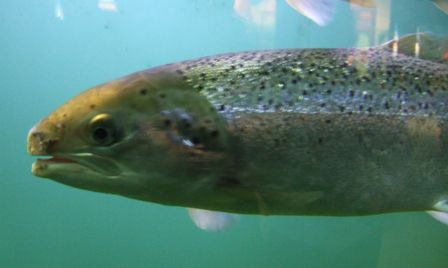 |
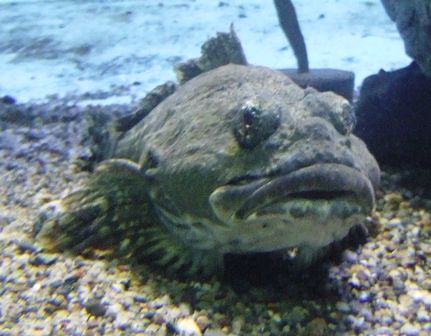 |
We are very used to cod and haddock and salmon but there are many other fish
in the sea and some of them are quite ugly but still edible. This is a
rockfish. |
| This is a more beautiful fish but sadly is less
edible. | 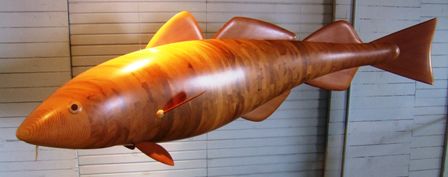 |
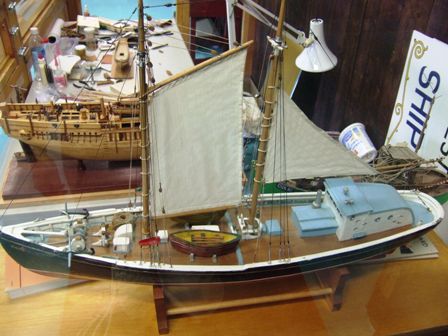 |
Ships are a bit big to show in a museum but there are lots of ship models of
boats which have been built or used in this area. This is an early fishing
boat with dories on the deck. In the background is a modeller's desk where
local craftsmen give demonstrations of boat modelling techniques. |
| There are more models of the Bluenose schooner, which
was built at Lunenburg, than all the other types of ship. Some of these are
absolutely exquisite. By comparison this is almost ordinary. | 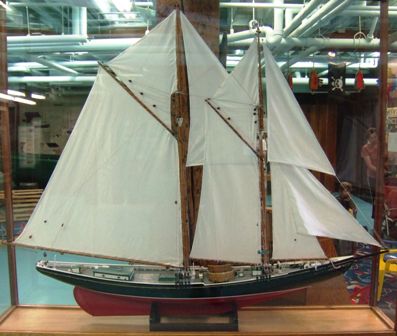 |
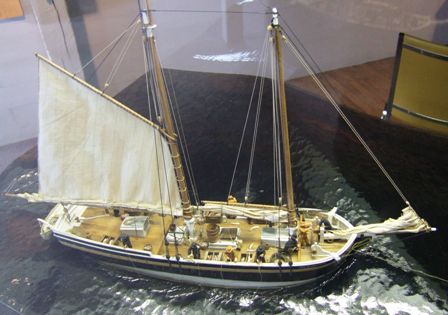 |
Unusually some of the models show the boats at sea with fishermen lining the
sides. In the days before trawl nets much of the fishing was done with long
lines cast from the deck or from the dories carried for the purpose. |
| Some of these fishing boats are quite large and square
rigged. This one shows clearly the fishermen lining the side. The seagulls
are a nice touch. | 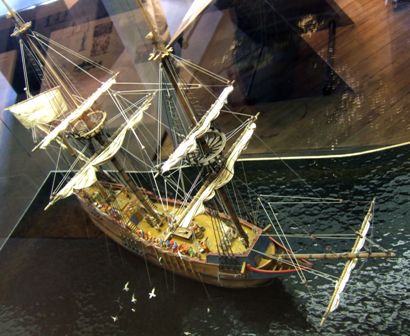 |
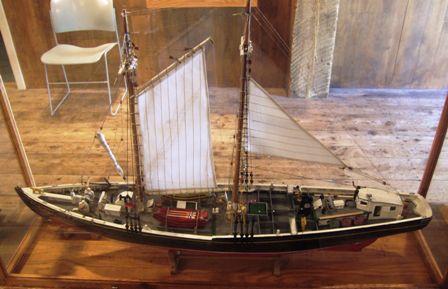 |
Whilst in the fishing areas the boats often ran with just a small sail to
enable it to maintain steerage way and avoid the lines getting tangled. |
| The schooners were very fast and to make them capable
of carrying more, they made them larger with more masts and more sails. Some
of the last ones built had six masts. | 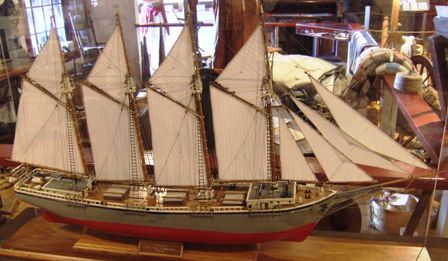 |
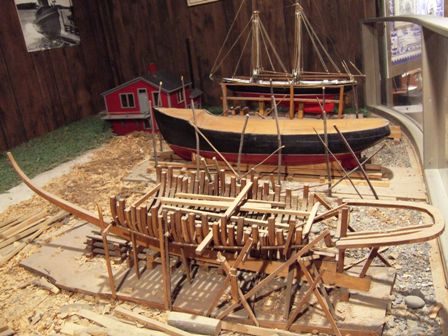 |
Another unusual model showed ships being built in the way in which they were
built when the shipyards here were in actual use. |
| These are earrings made from otoliths which are ear
bones from a cod. They have rings similar to tree rings and can be used to
age fish. In these communities nothing was wasted. | 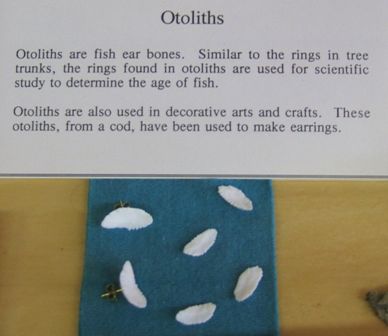 |
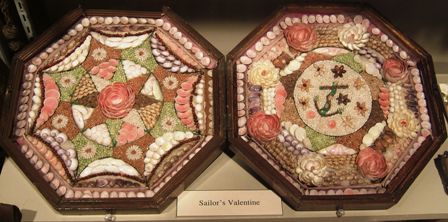 |
These are sailors' valentine plaques made with beautiful shell work. It was
not clear if these were made by the sailors or their loved ones left at
home. |
| Quilting is very popular in this area. This is a
patchwork quilt containing 913 pieces and is exceptionally colourful. It was
very expertly made by Lelia MacLachlan between 1887 and 1891 in Lunenburg
and later finished in Montreal. | 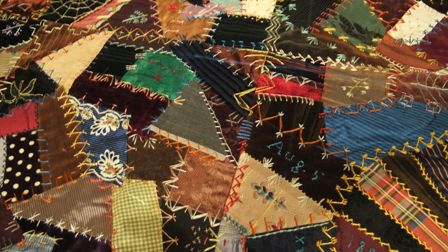 |
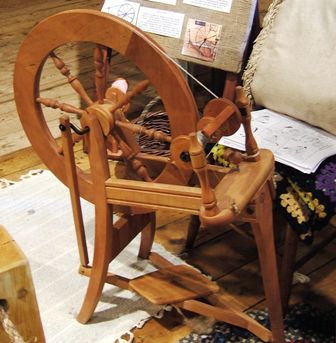 |
There are several spinning wheels on display. This looks more like a modern
replica than an original which would look much more worn. |
| There are also several displays of tools. On a ship tools
would have to be kept in order and they were often kept in cabinets with the
shape of the tool painted on the backboard. This however was a work of art. | 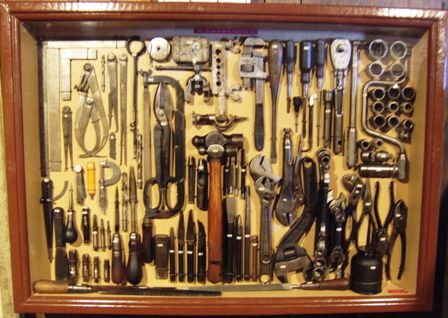 |
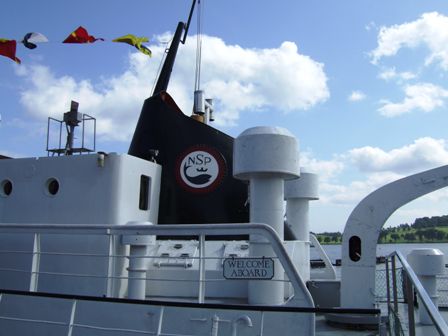 |
The museum has several full sized ships from different eras. This is a side
trawler, built in 1962, the 'Cape Sable'. |
| I love the engine rooms which hold huge pieces of
machinery in a very confined space. However I would not have liked to have
worked down here in an Atlantic gale... | 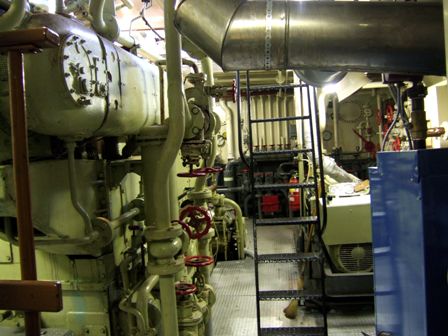 |
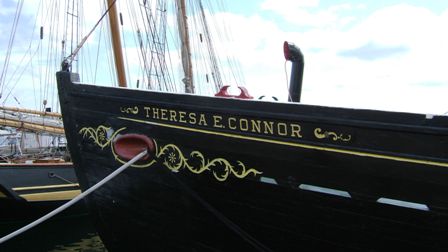 |
This is a schooner which had a small engine but was predominantly driven by
sail. It was launched at Lunenburg on December 14th 1938. It was prepared
for its last fishing voyage in 1963 but was unable to find fishermen
prepared to fish from dories in the Atlantic. It is 139 ft long by 27 ft
wide and draws 10 ft. It has been the flagship of the Fisheries Museum since
1967. |
| The steering wheel was a work of art in the tiny
wheelhouse at the stern. | 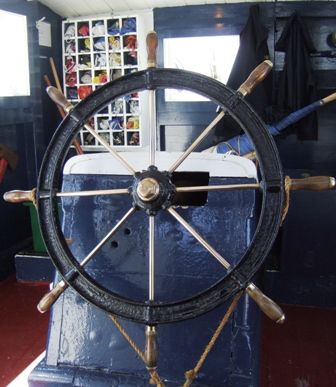 |
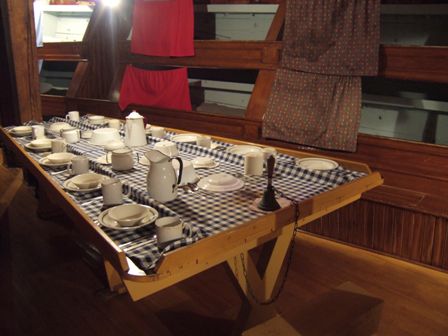 |
Here is the crew's mess deck with lips at the side of the table to stop the
crockery falling off. Around the edge of the room are the bunks where the
men slept. Some of these seemed quite short and would not have accommodated
today's youngsters. |
| The stove is oil fired and has substantial guards to
stop the pans falling off in the swells. | 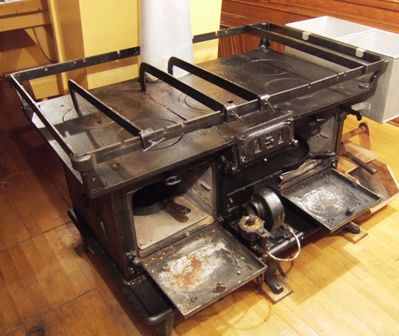 |
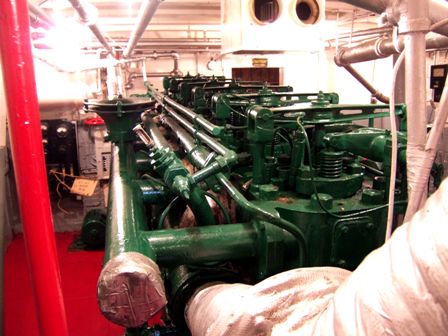 |
This is the schooner's engine room, again a substantial piece of machinery.
This is a 300hp Atlas Imperial diesel which has no clutch and drives the
propellor directly. To reverse, it is necessary to completely stop the
engine and restart. This was installed in 1946 to replace a 300hp Mann
diesel which was built in Germany and for which spares became unobtainable. |
| Finally the pride of the restaurant which shares the
museum building: a collection of signatures from those attending the 1995
summit meeting at Halifax NS. They include Jean Chrétian,
Boris Yeltsin, Bill Clinton, Jacques Chirac, Helmut Kohl, John Major,
Tomiichi Murayama, Lamberto Dini and Jacques Santer. | 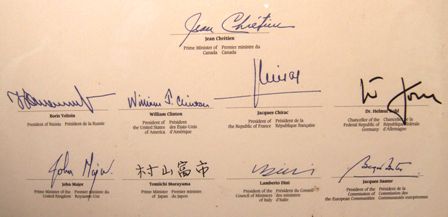 |
|